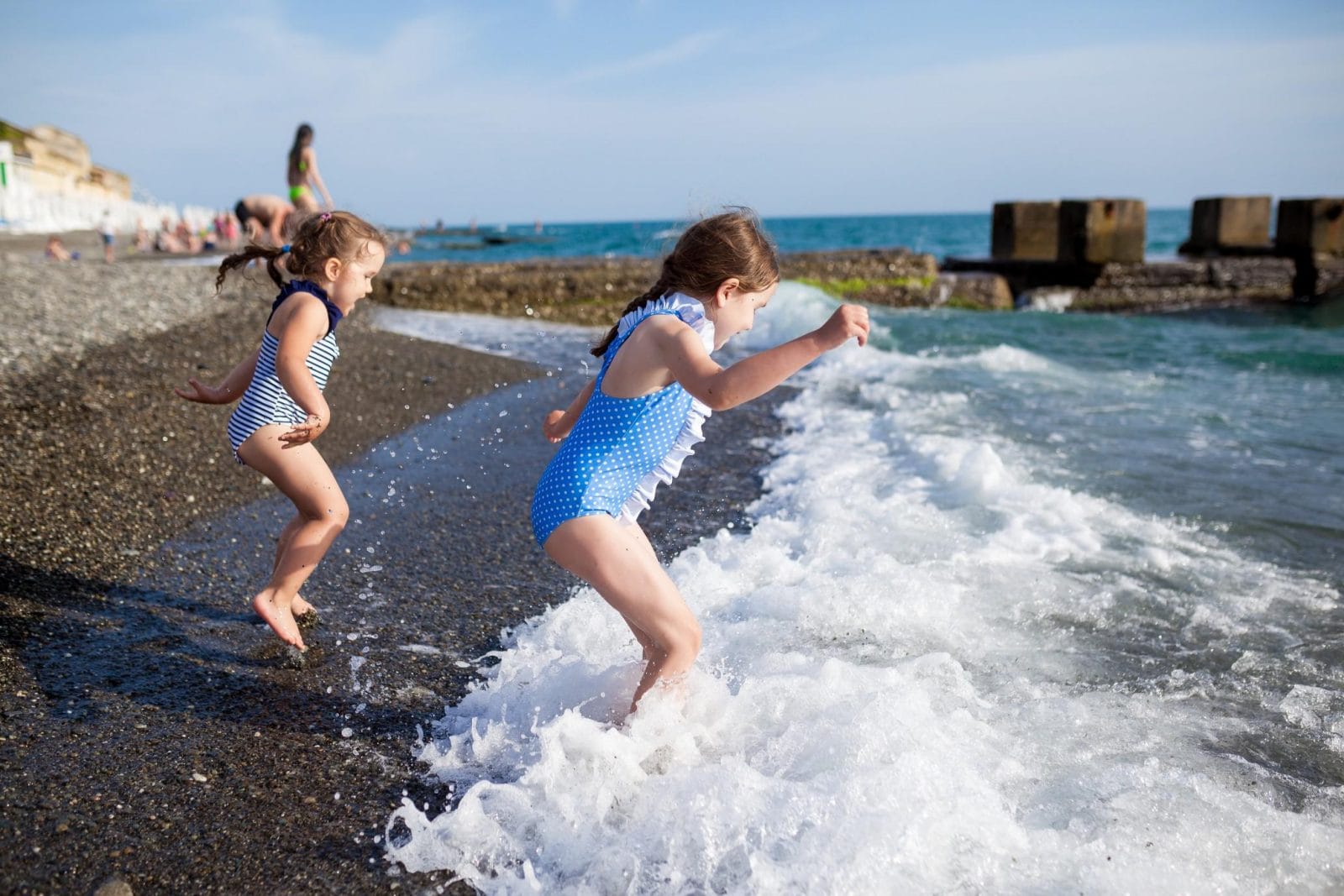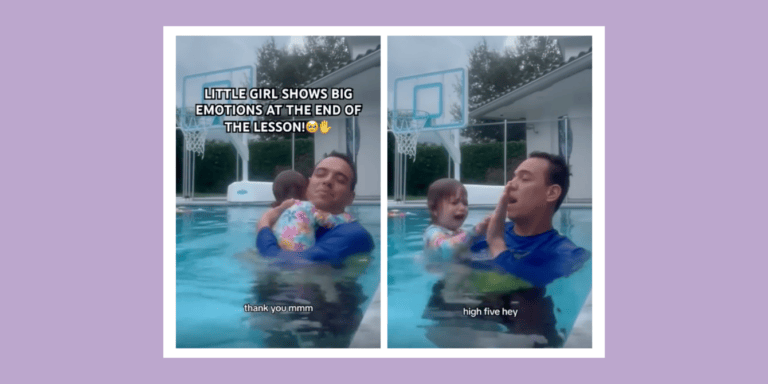How to identify a riptide at the beach this summer

A Facebook post on riptide precautions has been going viral, and for good reason.
Table of Contents
Now that summer is finally here, many families will be heading to the beach for some fun in the sun. You might be considering a family beach vacation. Or, maybe you have a local spot close by where the kiddos are sure to spend lots of time cooling off. But while there is nothing quite like splashing around in ocean waves, being aware of riptides is a safety precaution you should consider when your child is in the water.
So, what is a riptide? Riptides appear deceptively calm, but in actuality are strong sea currents which push away from the shore when a strong storm is near, and are formed by the strong winds pushing water towards the shore. They’re not just found at the ocean, either―Great Lake beaches have experienced riptides as well. Sadly, the US Lifesaving Association has found that over 100 people die each year after becoming caught in a rip current.
Related: 5 water safety tips to share with all your kids’ caregivers this summer
A Facebook post by former surf lifesaver, Kenny Jewell, went viral in 2015 and has continued to be shared over the years because of his insight into riptides, first by identifying what one looks like and secondly, what to do if you are caught in a riptide. And we’ve got his tips and insights below.
What is a riptide?
“Often the safest/calmest most enticing-looking area along a beach is usually a rip. A rip is usually the area devoid of wave activity and appears darker and deceptively calmer. It can sometimes appear milky or turbulent, but it is always pretty much void of wave activity. All that water coming in via waves has to go back out somehow, this is what a rip is,” Jewell writes.
3 riptide safety tips
- Take a few minutes to observe surf conditions when you first get to the beach to identify any rip areas.
- “If you are caught in a rip, DO NOT PANIC,” Jewell writes. “Go into floating mode and raise one arm as a distress signal when possible. See which direction the rip is taking you, is it straight out or at an angle? Once you have determined this, and if you have the energy, swim to the right or left of the direction of flow, never against. If you cannot swim out to either side of the rip, just go with it. Most rips won’t take you out very far, and will usually spit you out not long after they take you, so keep calm and save your energy for the swim back to shore.”
- Jewell suggests showing children the pictures he posted on his viral Facebook post so that they will be able to identify a riptide, too.
Related: Teens are the second most at-risk age group for drowning
“I constantly find myself when I’m at a beach automatically in patrol mode, and I’m always troubled seeing the amount of swimmers that enter the surf straight into a rip zone,” writes Jewell.
Educating yourself on ocean safety will make beach days a lot more enjoyable, mama. Sure we’re always watching our children, but now, when they’re in the water, we’ll know one extra thing to be watching out for.
Here’s to a safe (and super fun) summer!
A version of this post was published June 30, 2021. It has been updated.


































